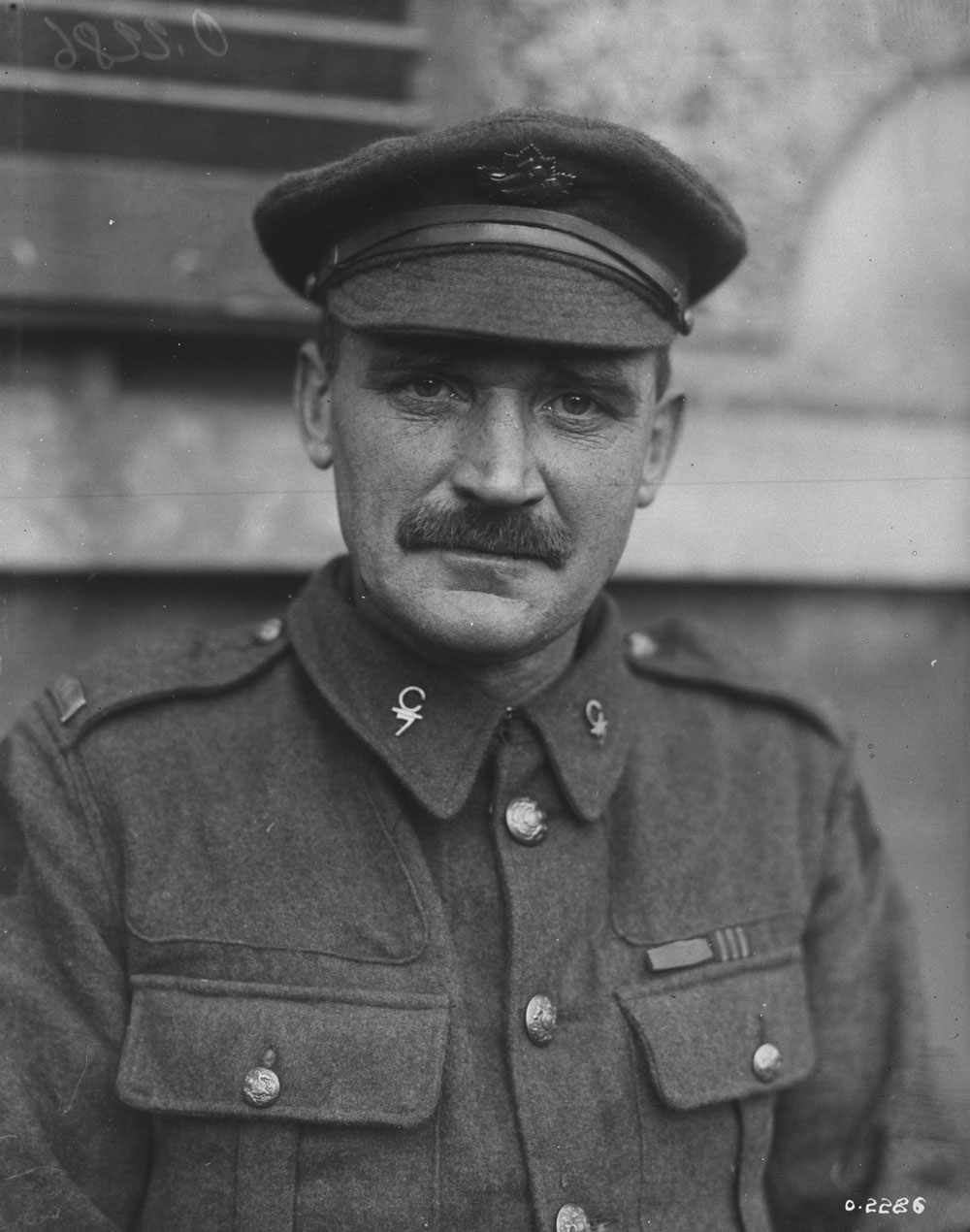Observed through history’s rear-view mirror, Vimy Ridge’s significance is clear. At the time, however, the bringing together of the Canadian Corps’ four divisions, for the first time, seemed to simply throw fresh blood onto the killing field that the 7 km-long ridge north of Arras, France, had become over nearly three years. As historian Tim Cook describes it, the ridge was “an open graveyard,” bearing the remains of some of the more than 100,000 French soldiers killed or wounded in previous efforts to remove the Germans. For the Allies, winning the ridge would destabilize German lines across the region. For the Germans, the ridge was the “hinge” of their line, protecting their newly constructed Hindenburg Line and a long stretch into Flanders. A loss would leave those entrenched positions open to the Allied guns above them.
The Canadians were under the command of British Lieutenant-General Sir Julian Byng (later Governor General of Canada). A popular leader with a keen eye for talent, he had great confidence in the Corps’ 1st Division leader, Canadian Major-General Arthur Currie. Together, they prepared and rehearsed meticulously with their troops for the battle. The men were shown models and maps, given precise information on the location of enemy strong points, and infantry soldiers were assigned tightly defined roles such as machine gunners or grenade throwers (instead of the usual presumption they would all be riflemen). Their instructions: Follow your commanding officer and if he goes down, follow the next in rank in descending order.
They attacked at 5:30 a.m. on 9 April, Easter Monday, amid bitter-cold wind, sleet and snow. The first wave of more than 15,000 Canadians struck hard, successfully capturing the front line. Three days later, they ran the Germans right off the ridge, having captured its main heights — “Hill 145” and “the Pimple.” The log of the 2nd Division’s 6th Brigade described the battle’s first day: “Wounded men sprawled everywhere in the slime, in the shell holes, in the mine craters, some screaming to the skies, some lying silently, some begging for help, some struggling to keep from drowning in craters.” Yet the Canadians did what no other army could — winning the Allies a pivotal victory that shifted the course of the war towards their final victory the following year.
The victory featured new tactics, but most of all, blood and courage. Four Canadians won the Victoria Cross.
Two months later, Byng was promoted and the newly knighted Currie took his place. The battle became symbolic of Canada’s contributions and sacrifices in the war — more than 60,000 dead — and gave Prime Minister Robert Borden the postwar impetus to push for autonomous recognition for Canada from Britain. It led to Canada’s change of status from colony to dominion and Commonwealth member. Vimy Ridge became the site of one of the most starkly moving memorials anywhere, a limestone structure built atop Hill 145, inscribed with the names of the 11,285 Canadians who died in France with no known grave. Just as they are remembered there, so is Canada’s role in the war that, sadly, did not live up to its description as the one that would “end all wars.”

 Share on Facebook
Share on Facebook Share on X
Share on X Share by Email
Share by Email Share on Google Classroom
Share on Google Classroom









